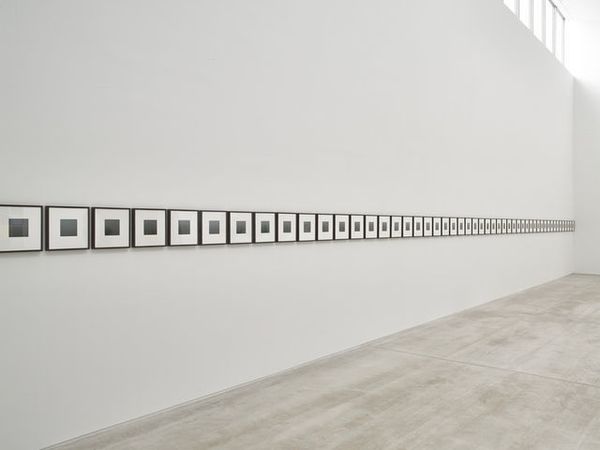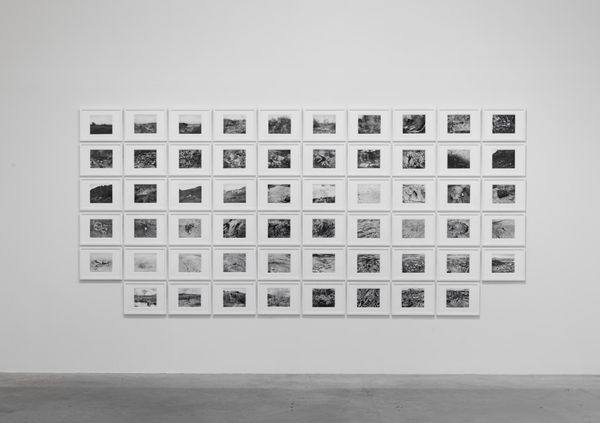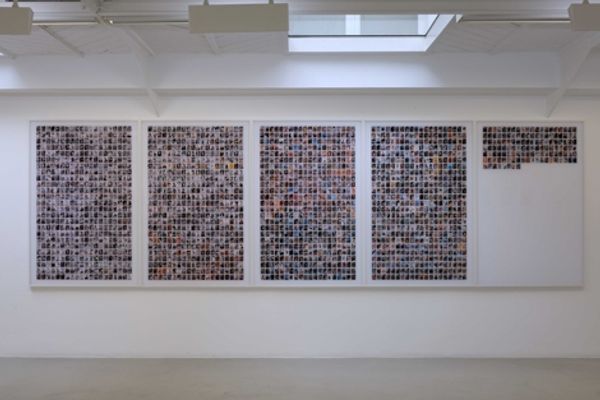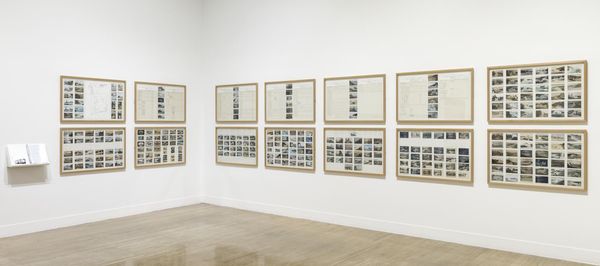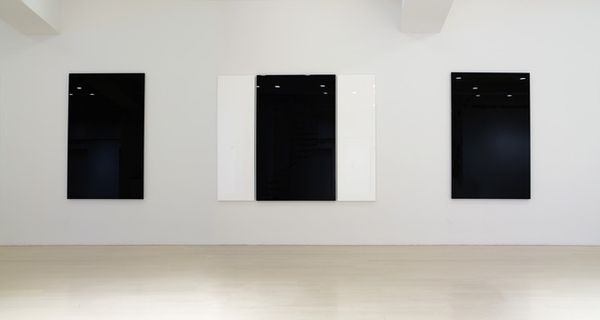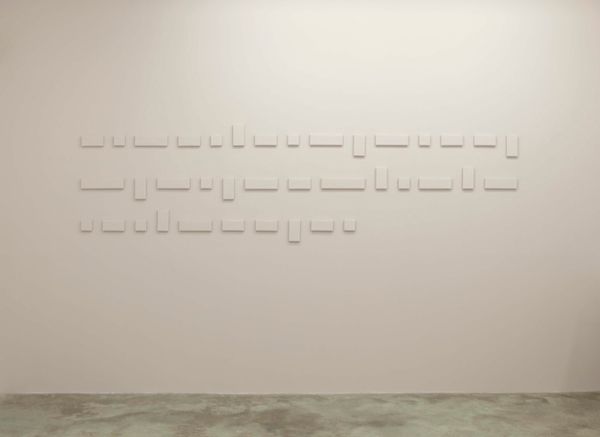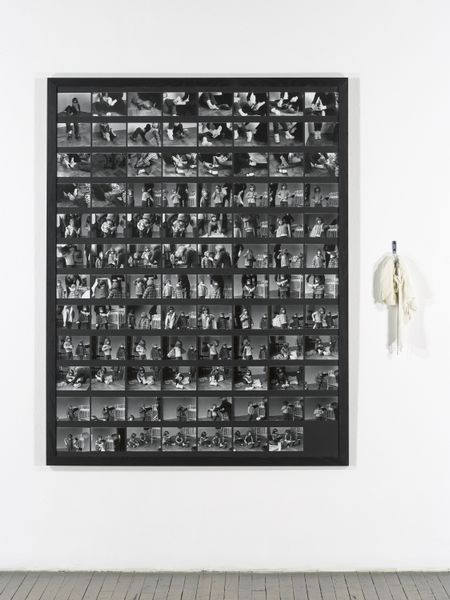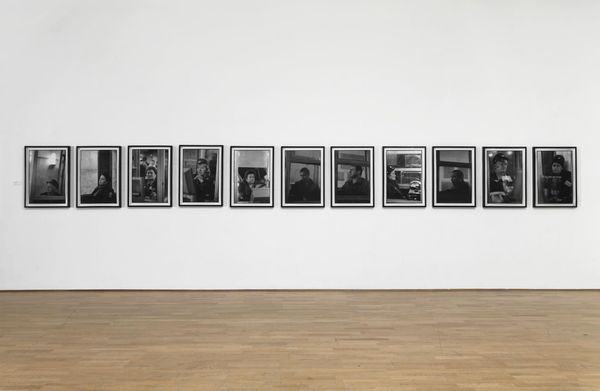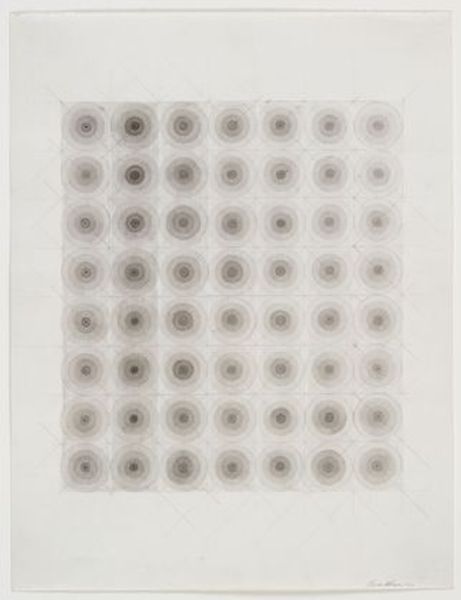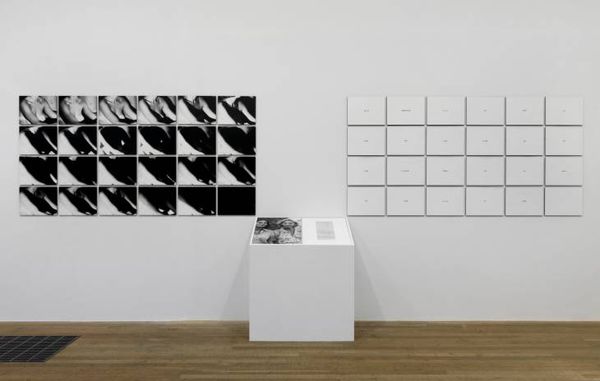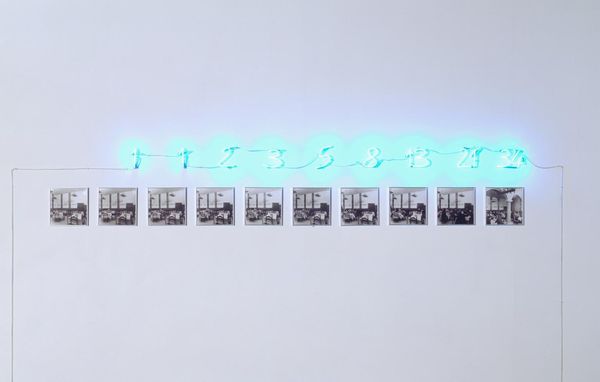
Dimensions: displayed: 1233 x 6159 x 19 mm frame 1: 230 x 275 x 19 mm frame 2: 224 x 282 x 32 mm frame 3: 1232 x 727 x 19 mm frame 4: 1232 x 389 x 19 mm frame 5: 1232 x 953 x 19 mm frame 6: 1232 x 575 x 19 mm frame 7: 1232 x 577 x 19 mm frame 8: 1232 x 1
Copyright: © The estate of Ian Breakwell | CC-BY-NC-ND 4.0 DEED, Photo: Tate
Curator: Ian Breakwell's "The Walking Man Diary" is an expansive work, comprised of photographs, text, and mixed media, currently held in the Tate Collections. My first impression is one of stark repetition, almost obsessive in its cataloging. Editor: It's a powerful piece. The sheer number of images, the grid-like structure, really speaks to a sense of labor and the everyday grind. I wonder what the materials tell us about the artist's process. Curator: The walking man figure resonates universally. He's an archetype—the wanderer, the exile, perhaps even a symbol of our own journeys through life, laden with personal meanings. Editor: Absolutely, but let’s not forget the physicality of creating something like this. The pasting, arranging, the sheer volume of material… it's a testament to Breakwell's dedication to documenting a particular experience, a labor-intensive process. Curator: It’s true. And it also allows us to read our own stories into the repeated images of the street, finding the symbolism that is meaningful to each of us. Editor: Yes, but those meanings are embedded in the very act of making, the conscious, material choices that shape our perception. It’s not just the symbols, but the labor that produces them.
Comments
tate 7 months ago
⋮
http://www.tate.org.uk/art/artworks/breakwell-the-walking-man-diary-t07701
Join the conversation
Join millions of artists and users on Artera today and experience the ultimate creative platform.
tate 7 months ago
⋮
During the 1970s, Ian Breakwell was living in a flat overlooking Smithfield Market in the City of London. From his window, he began to take photographs of an old man he often saw walking around the market below. Although the man appeared to be walking purposefully, he never seemed to be going anywhere in particular. Although we learn little about the man, Breakwell’s work represents his repetitive, yet seemingly aimless, route through the landscape of the city. This is measured against Breakwell’s static yet habitual recording of the man’s activity through the observational discipline of the diary form. Gallery label, February 2010
